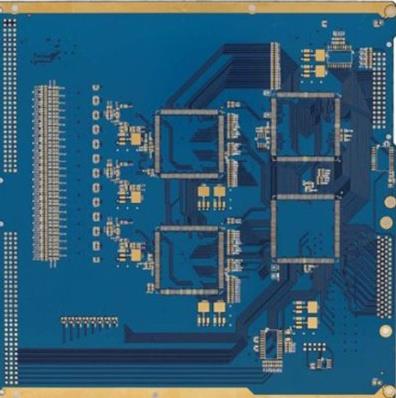Under the condition of frequency change, the DK and DF values of general type PCB substrate material show a large change. The DK value of general type epoxy-glass fiber cloth based substrate material (general type FR 408hr) at 1 MHz frequency is 4.7, while the DK value at 1 GHz frequency is 4.19. Above 1GHz, its DK value changes slowly. The trend of change is to decrease with the increase of frequency (but not significantly). Choosing high-speed PCB materials requires consideration of the manufacturability of the PCB and various properties that match the product.

fr408hr
Rogers or high-frequency and high-speed PCB material is a hard and dense material, which can be used to manufacture printed circuit boards. The board consists of epoxy resin core, metal plated with copper and aluminum. The surface is coated with aluminum. It has good size and advantages in thermal expansion coefficient. It can effectively control the size of temperature stress to ensure the stability of component performance. It can be widely used for high frequency power distribution and circuit board of CPU, switch, connector, etc. It is most commonly used for RF pcb board assembly because it is sensitive to electromagnetic (EM) waves (usually in the radio electro-optical spectrum). This helps to reduce the interference caused by other high-frequency devices, such as radio, television and mobile phones. Rogers PCB material also has excellent dielectric integrity and is designed for use in high-performance RF circuit boards. This material has excellent electrical and thermal stability, making it an ideal choice for exposure to extreme temperature and vibration in harsh environments.
FR 408HR laminate is reinforced and pressed with high-performance multi-functional resin and electrical grade (E-glass) glass fiber fabric. This material has increased the Z-axis expansion by 30%, and provides 25% more electrical bandwidth (lower loss) than competitive products in this field. These characteristics, together with the superior moisture-proof property during reflow soldering, enable the product to improve the quality of the plate from the perspective of heat and electricity.
Glass fiber reinforced material is the main bearer of mechanical strength in composite materials. Generally speaking, its dielectric constant is higher than that of resin matrix, and it also occupies a high volume content in composite materials. Therefore, it is the main factor determining the dielectric properties of composite materials. In the production of FR-4 copper clad plate, the traditional E-glass fiber cloth has been used all the time. Although the E-glass fiber cloth has good comprehensive performance and ideal performance and price, its poor dielectric property and high dielectric constant (6.6) have affected its application in the field of high frequency and high speed. At present, the composition of glass fiber fabrics with silicate composition produced by various countries in the world is basically the same. The basic components are SiO2, A1203 and CaO ternary systems, and the weight percentage fluctuates in a small range. Silicon oxide or boron oxide
The aluminium-oxygen skeleton has no weak connection ions and is almost non-conductive. However, when the network is filled with cations, especially alkali metal ions, the lattice structure is interrupted at the alkali metal ions, forming weakly linked ions, resulting in thermal ion polarization. This is the main factor affecting the dielectric properties of glass. At present, alkali-free glass fiber E glass fiber is usually used, and its dielectric constant is 7.2 (1MHz), which cannot meet the requirements of high-frequency high-speed circuits. The first method that can be used is to mix. Among alkali-free glass fibers, in addition to E glass fiber, there are D glass fiber (DK=4.7, 1MHz) and Q glass fiber (DK=3.9, 1MHz) with excellent dielectric properties, D glass fiber and Q glass fiber. Although they have excellent dielectric properties, they have two major disadvantages: (1) poor machinability and great wear on the drill head. (2) The cost is high, which is more than 10 times the price of E glass cloth. It is not suitable to use alone. Through reasonable selection of different types of glass fibers, it is required to ensure excellent low dielectric properties and processing properties, and well solve the cost problem of fr408hr industrial production.